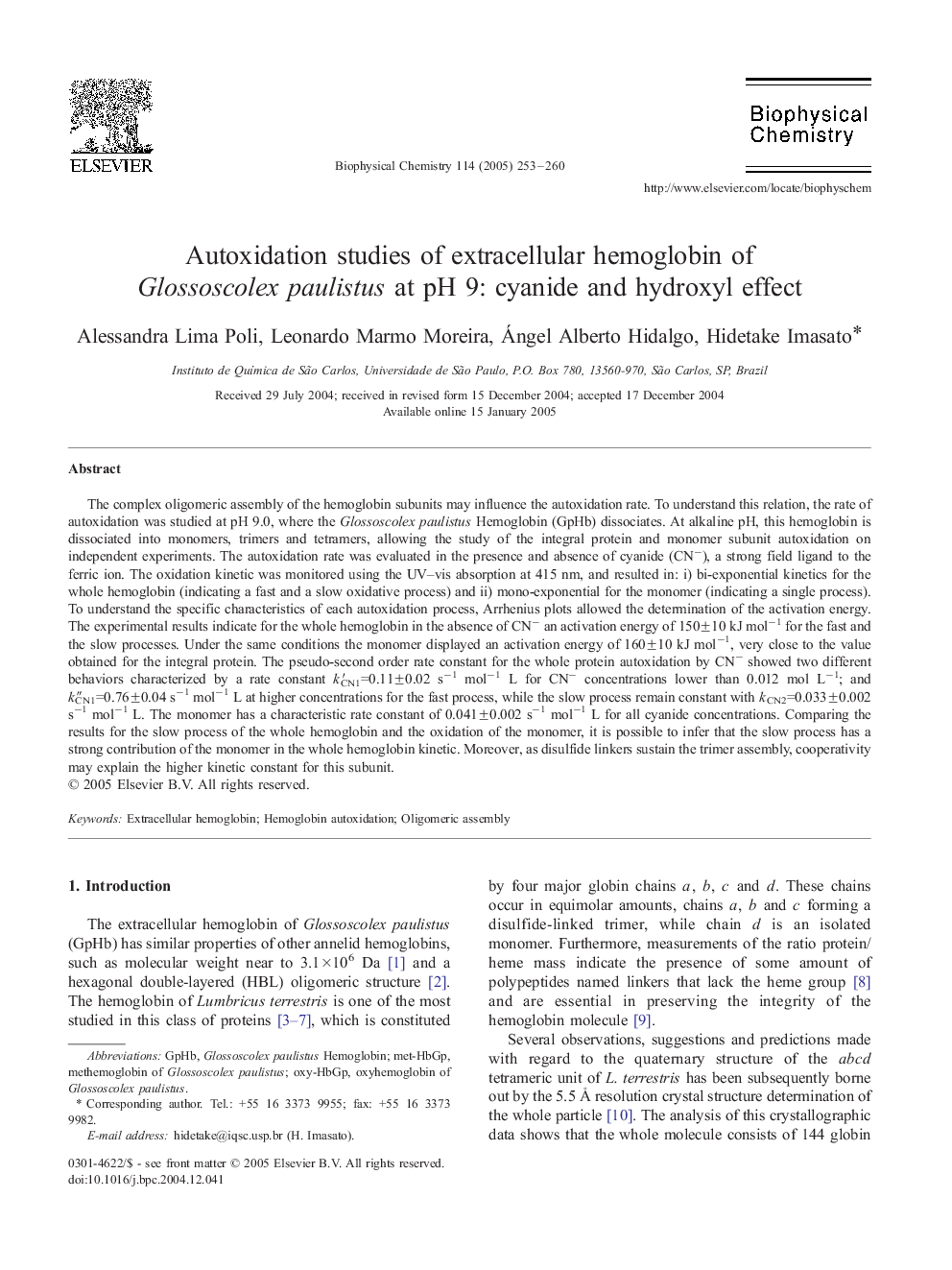| کد مقاله | کد نشریه | سال انتشار | مقاله انگلیسی | نسخه تمام متن |
|---|---|---|---|---|
| 9573401 | 1503988 | 2005 | 8 صفحه PDF | دانلود رایگان |
عنوان انگلیسی مقاله ISI
Autoxidation studies of extracellular hemoglobin of Glossoscolex paulistus at pH 9: cyanide and hydroxyl effect
دانلود مقاله + سفارش ترجمه
دانلود مقاله ISI انگلیسی
رایگان برای ایرانیان
موضوعات مرتبط
مهندسی و علوم پایه
شیمی
شیمی تئوریک و عملی
پیش نمایش صفحه اول مقاله

چکیده انگلیسی
The complex oligomeric assembly of the hemoglobin subunits may influence the autoxidation rate. To understand this relation, the rate of autoxidation was studied at pH 9.0, where the Glossoscolex paulistus Hemoglobin (GpHb) dissociates. At alkaline pH, this hemoglobin is dissociated into monomers, trimers and tetramers, allowing the study of the integral protein and monomer subunit autoxidation on independent experiments. The autoxidation rate was evaluated in the presence and absence of cyanide (CNâ), a strong field ligand to the ferric ion. The oxidation kinetic was monitored using the UV-vis absorption at 415 nm, and resulted in: i) bi-exponential kinetics for the whole hemoglobin (indicating a fast and a slow oxidative process) and ii) mono-exponential for the monomer (indicating a single process). To understand the specific characteristics of each autoxidation process, Arrhenius plots allowed the determination of the activation energy. The experimental results indicate for the whole hemoglobin in the absence of CNâ an activation energy of 150±10 kJ molâ1 for the fast and the slow processes. Under the same conditions the monomer displayed an activation energy of 160±10 kJ molâ1, very close to the value obtained for the integral protein. The pseudo-second order rate constant for the whole protein autoxidation by CNâ showed two different behaviors characterized by a rate constant kCN1â²=0.11±0.02 sâ1 molâ1 L for CNâ concentrations lower than 0.012 mol Lâ1; and kCN1ʺ=0.76±0.04 sâ1 molâ1 L at higher concentrations for the fast process, while the slow process remain constant with kCN2=0.033±0.002 sâ1 molâ1 L. The monomer has a characteristic rate constant of 0.041±0.002 sâ1 molâ1 L for all cyanide concentrations. Comparing the results for the slow process of the whole hemoglobin and the oxidation of the monomer, it is possible to infer that the slow process has a strong contribution of the monomer in the whole hemoglobin kinetic. Moreover, as disulfide linkers sustain the trimer assembly, cooperativity may explain the higher kinetic constant for this subunit.
ناشر
Database: Elsevier - ScienceDirect (ساینس دایرکت)
Journal: Biophysical Chemistry - Volume 114, Issues 2â3, 22 April 2005, Pages 253-260
Journal: Biophysical Chemistry - Volume 114, Issues 2â3, 22 April 2005, Pages 253-260
نویسندگان
Alessandra Lima Poli, Leonardo Marmo Moreira, Ángel Alberto Hidalgo, Hidetake Imasato,